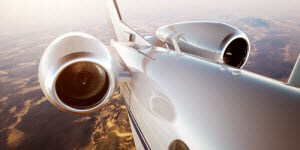National Aviation History Month: Mechanics of an Aircraft
The United States has a lot to be proud of, but the most prominent achievements the country has had is within the aviation industry. National Aviation Month celebrates the country’s accomplishments in aviation.
Read on to learn more about National Aviation Month and the advancements and mechanics of today’s aircrafts.
About National Aviation History Month
 National Aviation Month celebrates America’s most important contributions and achievements in the development of aviation. Throughout November, museums, historians, and other organizations across the country will showcase some of the nation’s most notable aviation successes, from the Wright Brothers to the constantly advancing technologies placed in aircrafts today.
National Aviation Month celebrates America’s most important contributions and achievements in the development of aviation. Throughout November, museums, historians, and other organizations across the country will showcase some of the nation’s most notable aviation successes, from the Wright Brothers to the constantly advancing technologies placed in aircrafts today.
Evolution of Aircrafts
In the early 1900s, the Wright Brothers created and flew the first successful fixed-wing aircraft. Their aircraft started as a simple mechanism compared to today’s jets and planes, but the Wright Brothers succeeded in creating a piece of technology that changed the aviation industry forever. That technology was the three-axis control.
The three-axis control allowed the pilot the steer and helped the aircraft to maintain its place in the air. Today, three-axis control is still used in modern airplanes. However, today’s aircrafts are now equipped with advanced technologies to make the flying easier, safer, and more efficient.
Mechanics of Modern Aircrafts
 Modern aircrafts have evolved into more technologically advanced devices. For example, their wings now include various enhancements to improve flight performance.
Modern aircrafts have evolved into more technologically advanced devices. For example, their wings now include various enhancements to improve flight performance.
According to NASA, the wings of a plane are designed specifically to make air move faster across the top of the wing. The faster the air moves, the less pressure there is above the wing. The wings are also designed to make sure that there’s more air pressure below them.
The difference between air pressure above and below the wings creates a force that helps lifts the aircraft into the air.
On top of that, enhancements in the overall structure of the aircraft as well as advanced controls make it easier to change direction and position while flying. There are three different dimensions that can change the position and direction of the plane:
- Roll shifts the aircraft left or right. To do this, ailerons, or a hinged device on each wing, are raised or lowered to control position.
- Pitch is when the aircraft moves up or down. The pilot tunes the elevators on the tail to make it ascend or descend in the air. Lowering the elevators makes it drop and raising it brings the aircraft up.
- Yaw is motion of an aircraft turning. To turn an aircraft, the rudder and the ailerons are moved to the side so a plane can turn left or right.
Science of Modern Aircrafts
Regardless of technologies and structure, physics still plays a big role in aviation. NASA also stated that an aircraft is affected by four forces during flight:
- Lift is the aerodynamic force produced when the aircraft when flying. It’s essentially what keeps it in the air.
- Weight is the gravitational force that attracts the airplane to the ground and keeps it balanced.
- Drag is the force that resists movement when flying.
- Thrust is the force generated by the engine to overcome drag and ensure that the aircraft moves through the air smoothly.
To learn more about the latest industry news, check out CPV Manufacturing’s blog.

